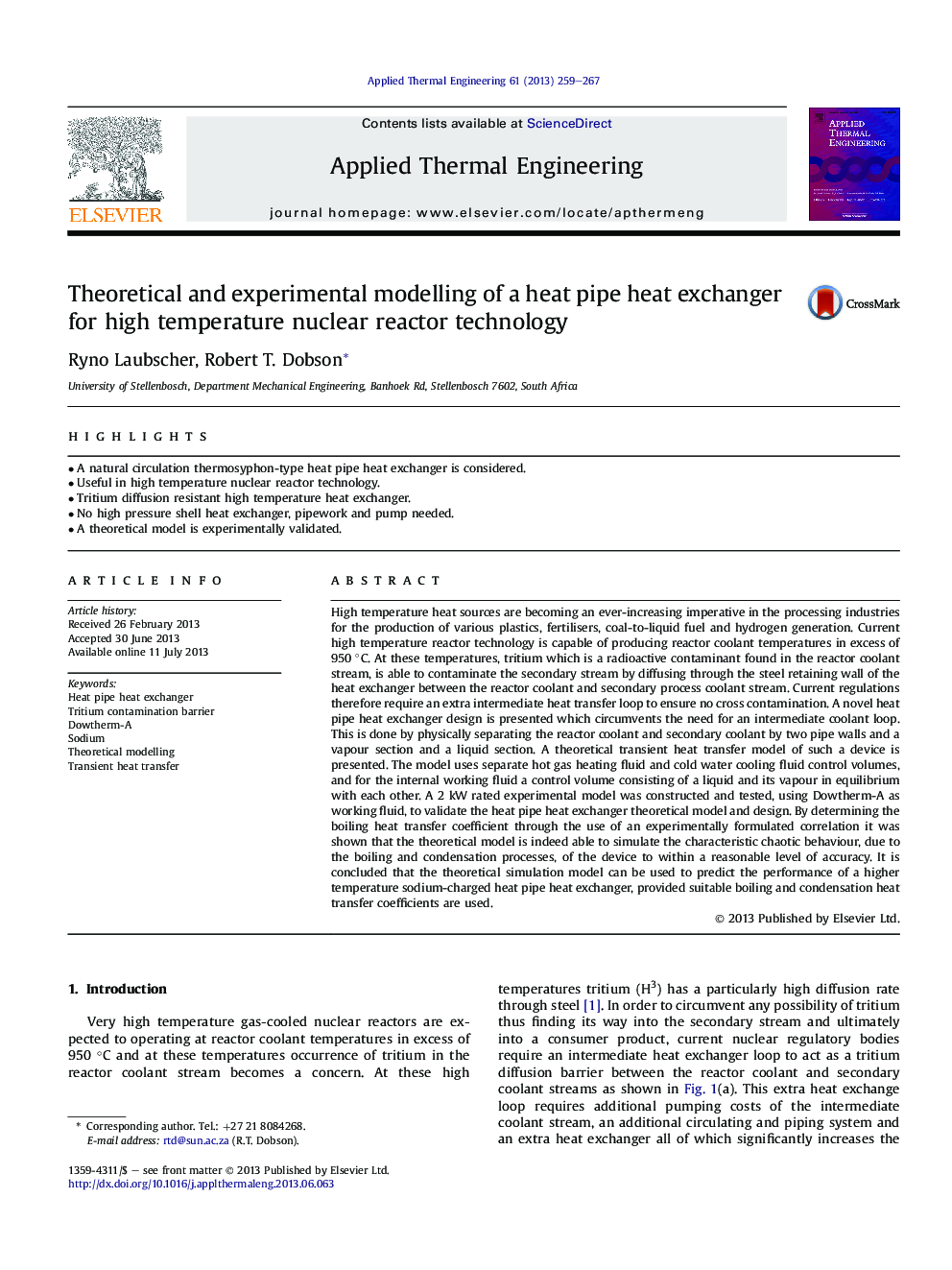| کد مقاله | کد نشریه | سال انتشار | مقاله انگلیسی | نسخه تمام متن |
|---|---|---|---|---|
| 646583 | 884567 | 2013 | 9 صفحه PDF | دانلود رایگان |

• A natural circulation thermosyphon-type heat pipe heat exchanger is considered.
• Useful in high temperature nuclear reactor technology.
• Tritium diffusion resistant high temperature heat exchanger.
• No high pressure shell heat exchanger, pipework and pump needed.
• A theoretical model is experimentally validated.
High temperature heat sources are becoming an ever-increasing imperative in the processing industries for the production of various plastics, fertilisers, coal-to-liquid fuel and hydrogen generation. Current high temperature reactor technology is capable of producing reactor coolant temperatures in excess of 950 °C. At these temperatures, tritium which is a radioactive contaminant found in the reactor coolant stream, is able to contaminate the secondary stream by diffusing through the steel retaining wall of the heat exchanger between the reactor coolant and secondary process coolant stream. Current regulations therefore require an extra intermediate heat transfer loop to ensure no cross contamination. A novel heat pipe heat exchanger design is presented which circumvents the need for an intermediate coolant loop. This is done by physically separating the reactor coolant and secondary coolant by two pipe walls and a vapour section and a liquid section. A theoretical transient heat transfer model of such a device is presented. The model uses separate hot gas heating fluid and cold water cooling fluid control volumes, and for the internal working fluid a control volume consisting of a liquid and its vapour in equilibrium with each other. A 2 kW rated experimental model was constructed and tested, using Dowtherm-A as working fluid, to validate the heat pipe heat exchanger theoretical model and design. By determining the boiling heat transfer coefficient through the use of an experimentally formulated correlation it was shown that the theoretical model is indeed able to simulate the characteristic chaotic behaviour, due to the boiling and condensation processes, of the device to within a reasonable level of accuracy. It is concluded that the theoretical simulation model can be used to predict the performance of a higher temperature sodium-charged heat pipe heat exchanger, provided suitable boiling and condensation heat transfer coefficients are used.
Journal: Applied Thermal Engineering - Volume 61, Issue 2, 3 November 2013, Pages 259–267